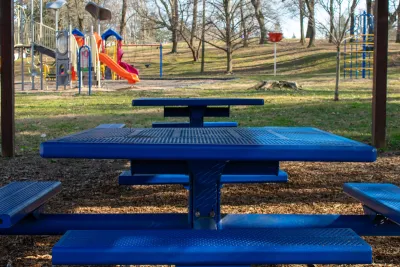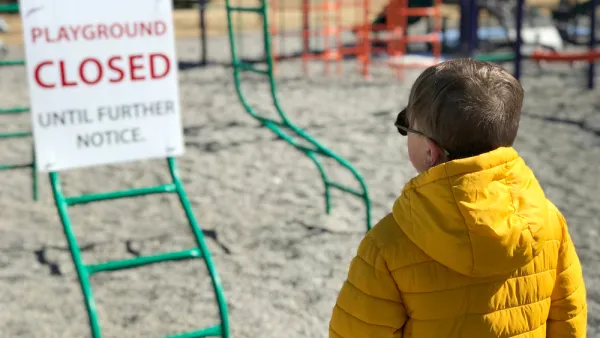Mapping playgrounds and their conditions can reveal how childhood play opportunities are inequitably distributed within cities.

A data-driven tool maps ‘playspace inequity’ in Philadelphia with the goal of highlighting the neighborhoods where young children lack access to playgrounds, writes Amanda Loudin in Next City. “While the numbers are specific to Philadelphia, KABOOM! provides similar data sets to other cities interested in learning about and addressing playspace inequity.”
Like other issues, understanding playspace inequity starts with data. “Needing an accurate method for data gathering on playspace locations, KABOOM! created what it calls the Playspace Inequity Prioritization Index (PIPI), made up of 21 data points for census tracts within the United States.” The index accounts for the condition of playgrounds as wel as their locations.
In Philadelphia, the scale indicates that “nearly one-third of the city’s census tracts and 40% of early childcare providers do not have access to a playspace.”
As Loudin explains, “Looking ahead, KABOOM! plans to not just identify where new playspaces should go in cities like Philadelphia, but then measure their usage after. Ultimately, KABOOM!’s multi-pronged approach to closing the playspace inequity gap will have lasting impacts on the communities it serves.”
FULL STORY: New Data Tool Shows Cities Where to Build Their Next Playground

National Parks Layoffs Will Cause Communities to Lose Billions
Thousands of essential park workers were laid off this week, just before the busy spring break season.

Retro-silient?: America’s First “Eco-burb,” The Woodlands Turns 50
A master-planned community north of Houston offers lessons on green infrastructure and resilient design, but falls short of its founder’s lofty affordability and walkability goals.

Delivering for America Plan Will Downgrade Mail Service in at Least 49.5 Percent of Zip Codes
Republican and Democrat lawmakers criticize the plan for its disproportionate negative impact on rural communities.

Test News Post 1
This is a summary

Test News Headline 46
Test for the image on the front page.

Balancing Bombs and Butterflies: How the National Guard Protects a Rare Species
The National Guard at Fort Indiantown Gap uses GIS technology and land management strategies to balance military training with conservation efforts, ensuring the survival of the rare eastern regal fritillary butterfly.
Urban Design for Planners 1: Software Tools
This six-course series explores essential urban design concepts using open source software and equips planners with the tools they need to participate fully in the urban design process.
Planning for Universal Design
Learn the tools for implementing Universal Design in planning regulations.
EMC Planning Group, Inc.
Planetizen
Planetizen
Mpact (formerly Rail~Volution)
Great Falls Development Authority, Inc.
HUDs Office of Policy Development and Research
NYU Wagner Graduate School of Public Service




























